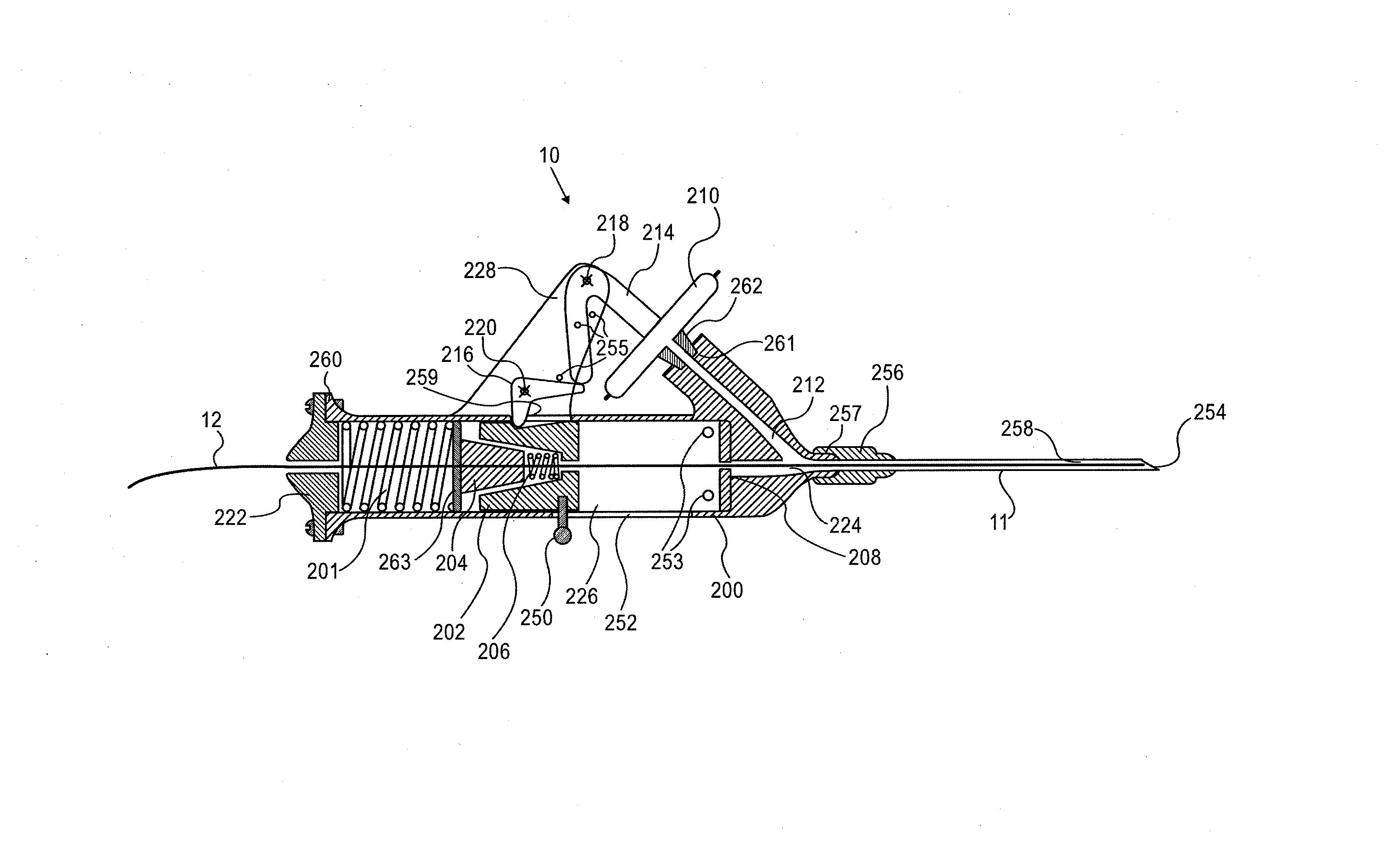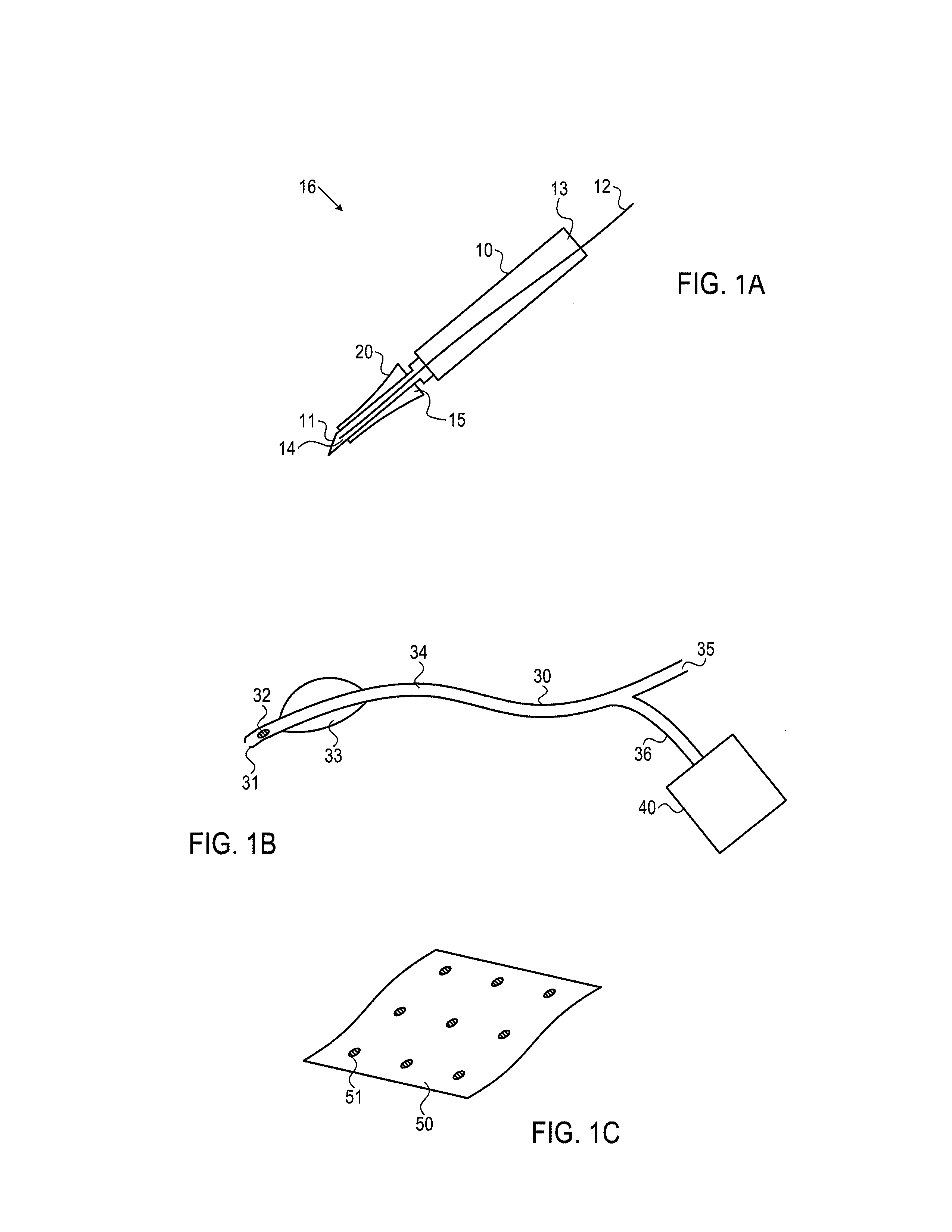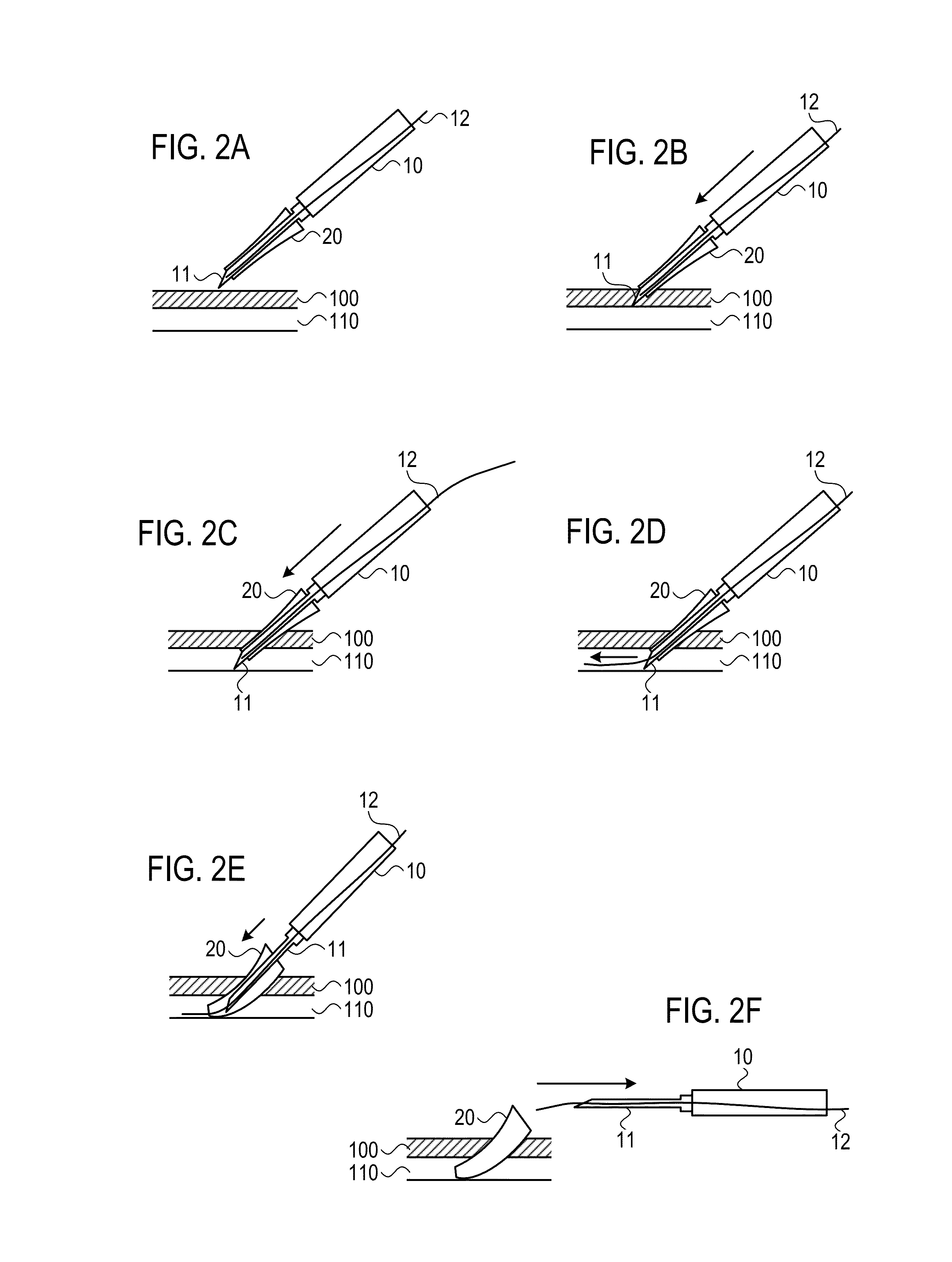Devices and methods for endovascular access and therapy
a technology for endovascular access and therapy, applied in the direction of catheters, applications, guide wires, etc., to achieve the effect of shortening the response tim
- Summary
- Abstract
- Description
- Claims
- Application Information
AI Technical Summary
Benefits of technology
Problems solved by technology
Method used
Image
Examples
embodiment 10
[0133]A preferred embodiment of the vessel cannulation device is a spring-loaded device, which automatically inserts a guidewire into the vessel upon penetration of the vessel by a needle. An embodiment 10 of such a device is shown in FIG. 3A-C. More particularly, FIG. 3A is a longitudinal section of an embodiment of vessel cannulation device 10 in its loaded / armed state, including a body 200, with needle 11 having needle tip 254, needle lumen 258 and needle hub 256 is attached to its front end at needle adapter 257. Body 200 includes needle adapter 257, anterior lumen 224, channel 212 ending in body to diaphragm interface 261, posterior lumen 226, air release holes 253, window 252, aperture 259, and bracket 228. Backplate 222 is connected to proximal end 260 of body 200. Diaphragm 210 connects to body 200 at body to diaphragm interface 261 through diaphragm adaptor 262. Diaphragm 210 is in fluid communication with adapter 262, body to diaphragm interface 261, channel 212, needle ad...
embodiment 2500
[0185]Embodiment 2500 of vessel cannulation device shown in FIGS. 42A-B utilizes a similar mechanism to that previously described for vessel cannulation device 10, in order to automatically advance a sheath over the needle into the blood vessel. Device 2500 automatically advances a sheath over the needle a large distance, inserting the sheath into the vessel.
[0186]Typically, in embodiment 2500, sheath 2512 will be automatically advanced between about 20 mm-100 mm, preferably about 30 mm-60 mm.
[0187]More particularly, FIG. 42A is a longitudinal section of an embodiment of vessel cannulation device 2500 in its loaded / armed state, including a body 200, with needle 11 having needle tip 254, needle lumen 258 and needle hub 256 is attached to its front end at needle adapter 257. Body 200 includes needle adapter 257, anterior lumen 224, channel 212 ending in body to diaphragm interface 261, posterior lumen 226, air release holes 253, window 252, aperture 259, and bracket 228. Backplate 222...
PUM
 Login to View More
Login to View More Abstract
Description
Claims
Application Information
 Login to View More
Login to View More - R&D
- Intellectual Property
- Life Sciences
- Materials
- Tech Scout
- Unparalleled Data Quality
- Higher Quality Content
- 60% Fewer Hallucinations
Browse by: Latest US Patents, China's latest patents, Technical Efficacy Thesaurus, Application Domain, Technology Topic, Popular Technical Reports.
© 2025 PatSnap. All rights reserved.Legal|Privacy policy|Modern Slavery Act Transparency Statement|Sitemap|About US| Contact US: help@patsnap.com



